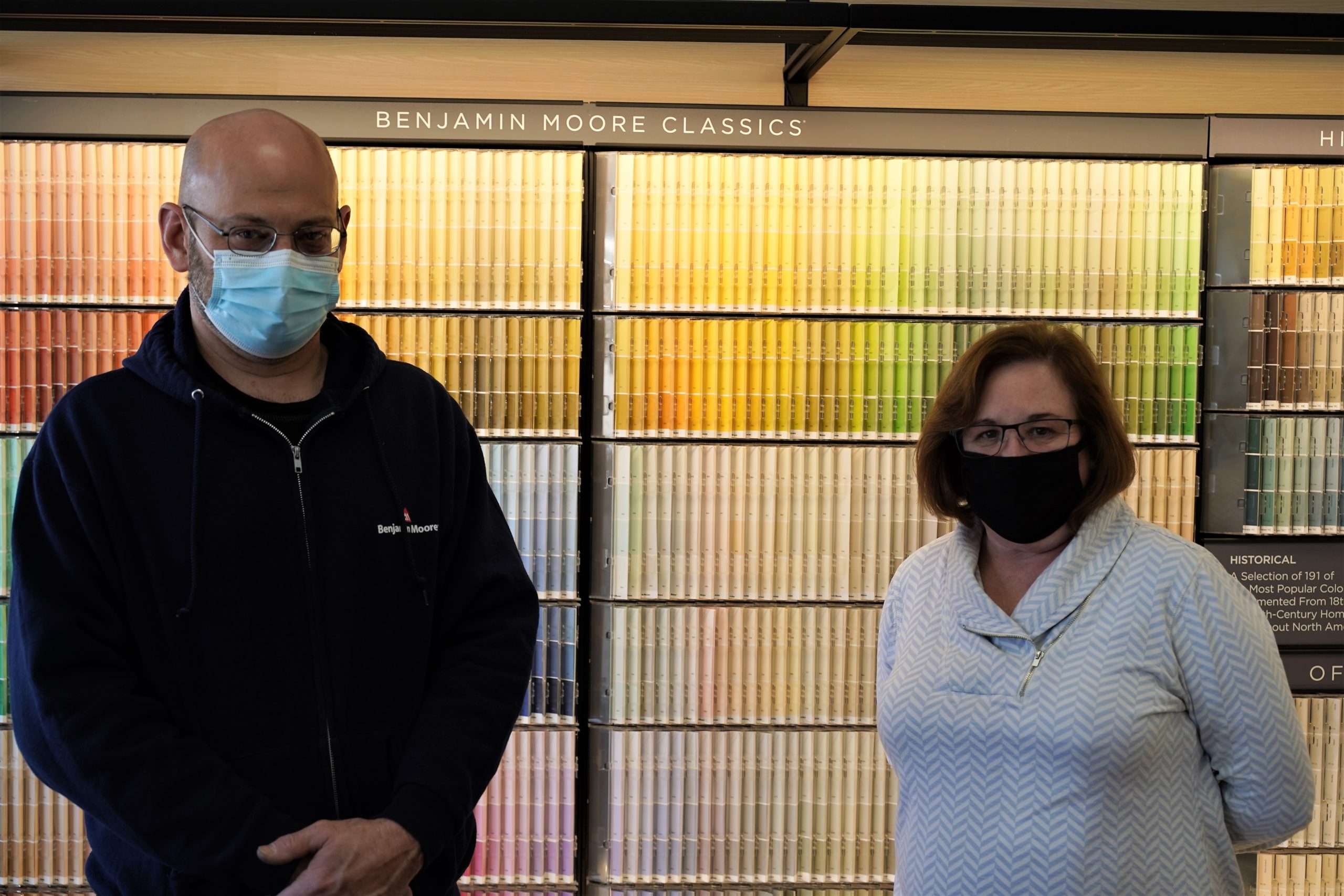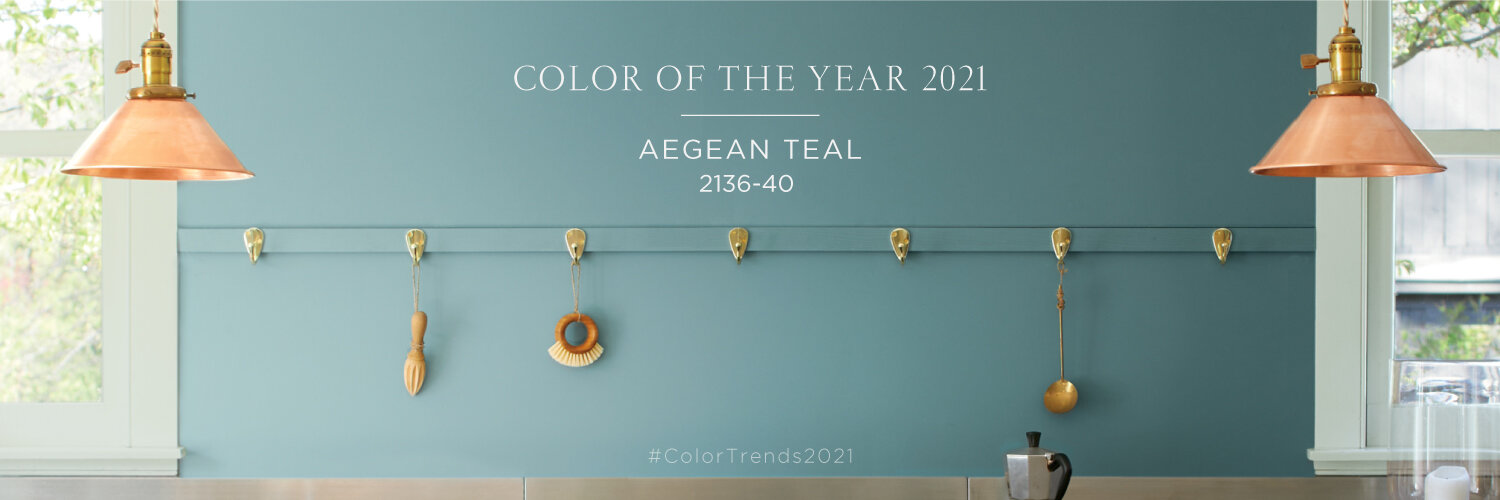NORTH SMITHFIELD – “Color my world with hope,” goes the 1970 mega-hit song by the band Chicago.
The line from the lyrics of the love song that countless people danced to at bars, proms, and weddings could apply to today, with Thanksgiving on the horizon amid admonishments to avoid gatherings and the looming threat of total home confinement.
Compliant and characteristically optimistic Americans not entirely devastated by the last bout of sudden dramatic change coped however possible within restrictions, with methods such as investing in do-it-yourself home improvement projects and hiring the pros for major renovations, as a shard of light in darkness of 2020. Changing one’s habitat with color, even one room, can lift one’s mood and create at least the perception of having a choice and some control, when confined to home seems to mean much when daily living has been disrupted.
The popularity of do-it-yourself projects in the U.S., such as painting, during the shut-down is still “a trend,” and projected to continue.
“More than 40 percent of consumers indicate having post-pandemic DIY home improvement plans,” according to NPD Group.
The American home improvement industry is, “stronger than it has been in over ten years and encompasses the sale of building materials, appliances, décor, and other home enhancements, and the services offered by contractors, tradespeople, and other workers who help to build, install, modify, and upgrade homes,” reports ipropertymanagement.com
One home improvement change in décor that won’t break the bank account is painting a room.
“For a small investment of a couple of gallons of paint you can completely change the look of a room,” said Kyle Klockars, president of Village Paint & Decorating in North Smithfield.
Paint will, “liven up,” a room, and the do-it-yourselfer gains a “feeling of accomplishment,” when making a living space brighter and new, notes Klockers.
Experts say color affects the body, the mind and the emotions. The Benjamin Moore paint company’s color of the year is aegean teal.
“It’s a really soothing color; [it] has some blue and some green in it,” said Pam Mort, color consultant for Village Paint.
Mort attended the Art Institute of Pittsburgh and studied residential planning. She says that neutral colors remain in style.
“Believe it or not, a lot of the grays are soothing,” Mort said. “More popular grays [include] revere pewter, stonington gray,”
Mort explains that customers, “add color with pillows curtains but build off the neutral,” and, “they might use dark color as accent.”
Another favorite color is beach glass, which can look blue or green.
“It’s one of my go to colors– spa-like soothing color makes you feel like you’re at the ocean,” said Mort.
Choosing color from the array available can be confusing. The consultant said customers, “walk in the paint store and see a wall of color. They get overwhelmed.”
Mort’s job, “is to figure out how they see color.”
She simplifies choosing color by helping find colors they love. Each person is unique including in how colors are perceived and the effect the colors have.
“Some colors might not make me feel good, but makes them feel wonderful,” she said.
Mort, “gets people to trust themselves.” Customers might believe they have no aptitude for choosing colors, so she observes, “where they’re coming from, such as clothes they wear and colors they don’t like.”
“I love when I help people pick color, and I can tell when the light bulb goes off by their face,” Mort said. “They love it.”
What’s more, “there is definitely color theory,” Mort said.
For example, red makes people feel hungry.
“You see it in dining room a lot red and white,” and red, “gives you energy,” said Mort, noting that it’s not a good color for a kid’s bedroom.
“Color is really fascinating,” she said.
Chromotherapy, or the practice of using color for healing, dates to the ancient world, at least as far back as 3100 B.C.
“Ancient Egyptians and Greeks used colored minerals, stones, crystals, salves, and dyes as remedies, and painted treatment sanctuaries in various shades of color,” writes Helen Graham, lecturer in psychology at Keele University in England specializing in color research.
“Pythagoras applied color light therapeutically and ‘color halls’ were popular healing treatments in ancient Egypt, China and India,” according to blissplan.com
Niels Finsen of Denmark is credited as “the pioneer of modern color therapy.”
“Following his discovery in 1877 of the bactericidal action of solar ultra-violet energy, Finsen experiment with healing wounds with visible light. He subsequently used red light to inhibit the development of smallpox scars and, in 1896, founded a Light Institute – now the Finsen Institute of Copenhagen – for the phototreatment of tuberculosis. In 1932, Gerrard and Hessay, two Californian psychologists, scientifically determined that blue light had a calming effect and red a stimulating power on mankind.”
In fact, the power of color is ubiquitous even when not understood and unacknowledged. For instance, bouquets of flowers or potted flowering plants are given to the sick for cheer. The scent is said to have therapeutic effects, such is the contention of the popular Dr. Bach’s Original Flower Remedies system – and the colors of the flowers can produce “a harmonizing effect,” wrote W.J. Colville in Light and Colors, a 1914 book.
A French hospital employed color as therapy of blue and other light rays.
“Blue is par excellence the color which subdues violent mania and excites noble moral feelings,” explained Colville, and yellow, “acts upon the nerves,” and is, “overexciting,” to a, “nervously irritated system.”
Green, however, is, “extremely quieting, except very dark green, which, like dark blue, borders so closely on black as to possess very little tranquilizing tendency.”
Today, a paint company seems to echo Colville’s claims in 1914.
“Amid uncertainty, people yearn for stability. The colors we surround ourselves with can have a powerful impact on our emotions and wellbeing,” stated Andrea Magno, Benjamin Moore Director of Color Marketing & Development, in a press release. “Aegean Teal 2136-40 and the corresponding Color Trends 2021 palette express a welcoming, lived-in quality that celebrates the connections and real moments that take place within the home.”
Almost as if anticipating the hardships of 2020, the color was chosen back in January, before the “crush the COVID curve,” began.
If you’re shopping for paint and unsure about aegean teal, Village Paint offers professional guidance in choosing color, whether shades of teal, or red, or green, or purple, or other colors, said Mort.
The color consultant has, “a distinct eye for color, impeccable attention to detail, and in-depth understanding of the importance available light plays in design choice. These skills, combined with her dedication to complete customer satisfaction, make Pam the ideal professional to consult when considering a change in your living space,” according to the Village Paint website.
Painting is accessible to just about everyone, whereas, not everyone can wire electricity or install plumbing, “the average person can do [painting] with confidence,” said Klockers.
Business typically slows at paint stores during the holiday season as people focus on priorities such as parties. However, this year and into the next , the president of the local store says he doesn’t know what to expect.









